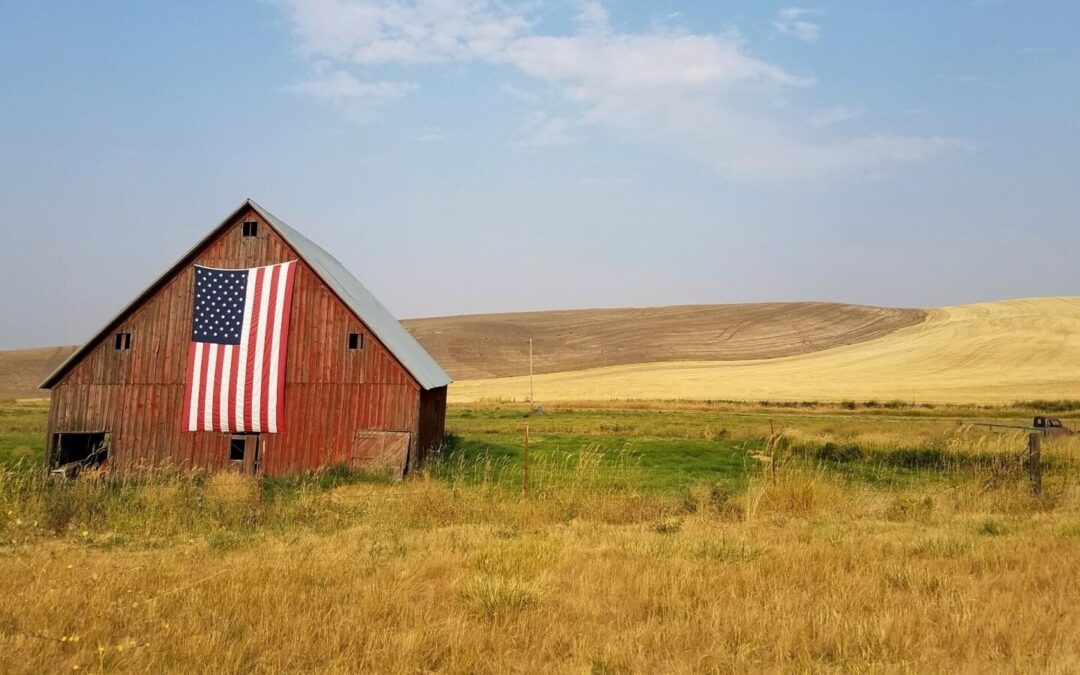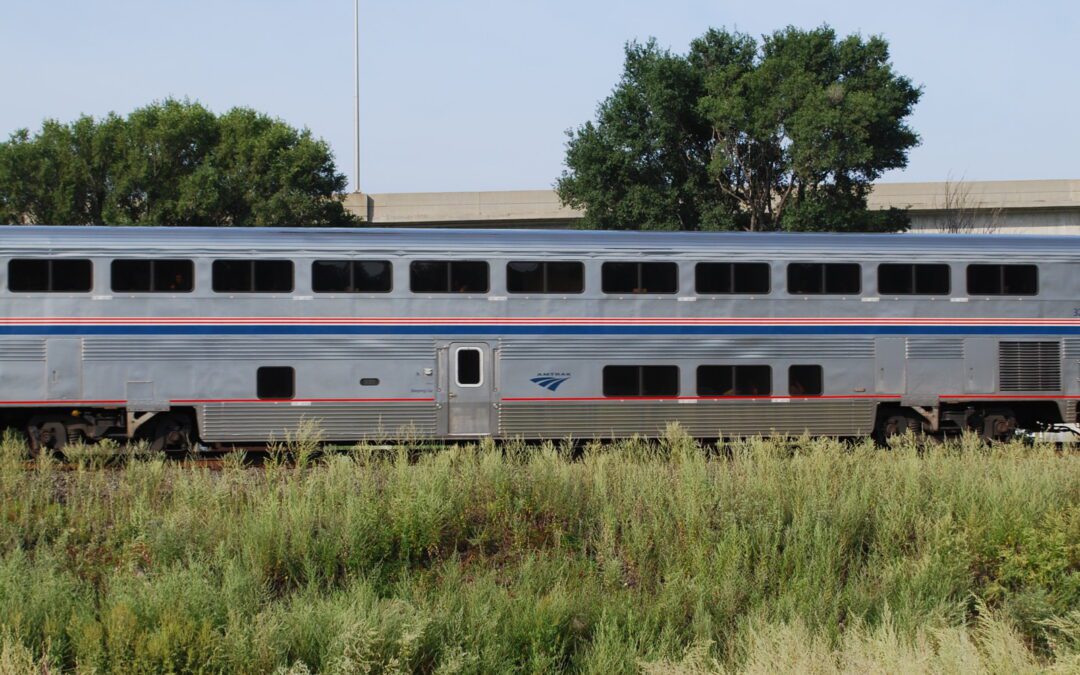How High-Speed Rail Will Reduce Carbon Emissions Getting serious about climate change means getting serious about building great trains. Join Us The best way to cut carbon emissions while expanding our freedom to move Take a look at the numbers below from...
Dallas City Council Briefed on High-Speed Rail Project
On Wednesday, March 6, the North Central Texas Council of Governments (NCTCOG) briefed the Dallas City Council on the proposed Dallas to Fort Worth High Speed Line. While the Dallas City Council approved a one-seat ride from Dallas to Fort Worth in 2015, there was a lot of pushback from council members at this briefing.
A number of city council members expressed doubt about the feasibility of the high-speed line, and were concerned about the project’s current alignment and its impact on planned development projects near the station in Cedars. The federal government approved the station in Cedars back in 2017, but since then a new $3 billion convention center adjacent to the planned line has begun development. Hunt Realty Investments owns 25 acres near the convention center and has announced plans to build a $5 billion mixed-use development. They don’t believe their plans and the rail line can coexist.
At the briefing, the NCTCOG proposed possible pedestrian lobby connections with the Hyatt Regency at the convention center, as well as a pedestrian deck plaza. Michael Morris, Director of Transportation at NCTCOG, explained that the rail alignment would not directly cut through the project and that the right-of-way would only impact about a dozen private properties in total. Morris also emphasized that the Cedars station has already been environmentally cleared, and moving the site would involve going through that lengthy process again. The Cedars station is also critical to connecting to the Dallas to Houston high-speed line, and allowing for a one-seat ride from Fort Worth to Houston.
There were council members who defended the high-speed rail project, including Council Member Omar Narvaez, who chairs the city’s transportation and infrastructure committee.
“This is something that if we are the epicenter of high-speed rail for the entire United States, this can take Dallas into a trajectory that I can’t even imagine. … We need to look at other countries … that have had this technology for decades. We are finally catching up. Development and property values — as far as the information I’ve been presented … — actually skyrocket and go up along these
Read More
Dallas-Fort Worth Could Be “First True High-Speed Rail Corridor”
HSRA Webinar: Dallas to Forth Worth High Speed Rail
High-Speed Rail Versus Downtown Dallas
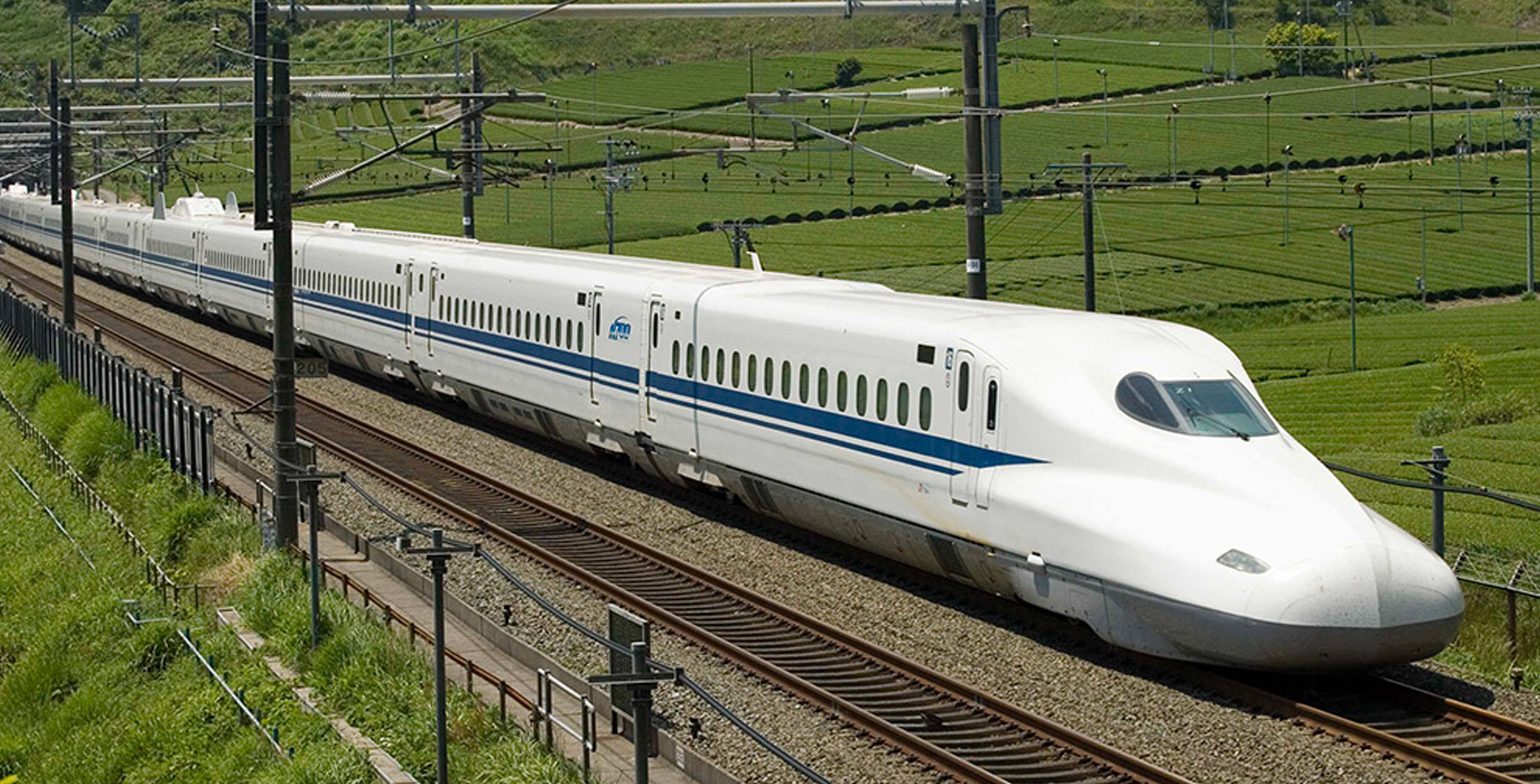
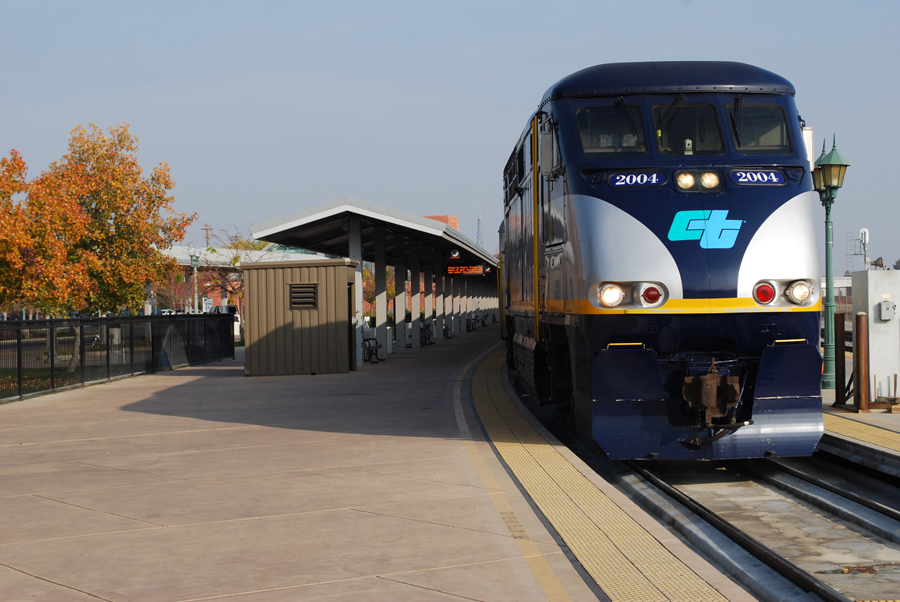
Siemens Venture Cars Enter Service On the San Joaquin
On March 5, the first new Siemens Venture Cars entered service on the San Joaquin line, operating between Bakersfield and Oakland. Siemens Mobility, under contract to Sumitomo Corporation of America, built the railcars at its facility in Sacramento. Caltrans purchased the new railcars with $132 million in federal and state funds.
The first six-car set is in operation, helping to restore service to pre-pandemic levels and setting the stage for future service improvements. The cars are capable of reaching speeds of up to 125 mph, making it possible to increase speed and performance on the line, as California continues to improve its rail network. The rest of the seven trainsets are expected to be in operation on the San Joaquin line by the end of 2025.
In February of 2022, we had the opportunity to ride the new Venture Cars as they entered service in the Midwest. In our opinion they feel very open and inviting, with much bigger windows letting in light and allowing for better views as you travel. They are also ADA accessible, with wheelchair users able to access the entire train from a single lift in the cafe cars. You can read more about our experience riding the Venture Cars and see pictures here.
Read More:
California Launches New Siemens Venture Railcars Into Service
Talgo Trains Built for Wisconsin, Enter Service
On February 29, the first phase of the Lagos, Nigeria LRMT Red Line project opened. The first phase is 17 miles of a total planned 23 mile route. The full route will run from Agbado to Marina (downtown Lagos), with a total of 13 stops and a trip time of about 35 minutes. The service will run 37 daily trips in the initial operating phase, with ridership predicted to reach 500,000 passengers a day.
Lagos is the largest metro area in Africa, with a population over 21 million. It also has the worst traffic in the world, according to data from Numbeo (a crowd-sourced online database). A big contributing factor is a lack of good transit options. In fact, Lagos just opened its light rail system last year, with the Red Line being the second of six planned lines.
The new service is being operated using two 14-car Talgo Series 8 trainsets, with capacity for 420 seated passengers. These trainsets were initially ordered by the state of Wisconsin in 2009 for use on an extension of Amtrak’s Hiawatha, which would have served Chicago, Milwaukee, Madison and the Twin Cities. In 2010, former Governor Scott Walker refused a $823 million federal grant to build the Hiawatha extension, but the state was still on the hook to pay for the ordered trainsets. After a long legal battle, Wisconsin ultimately paid Talgo $59 million and allowed the manufacturer to maintain ownership of the equipment.
While this decision was a huge setback for passenger rail in Wisconsin, the outlook for trains in the state is much better these days. The state recently received $2.5 million to study the feasibility of passenger rail to Madison, Eau Claire, Green Bay, and other communities. There is also strong support across the state for a network of fast, frequent trains, and the federal funding is now there to take advantage of this widespread support.
Learn more about trains in Wisconsin.
Read More:
Megalopolis With World’s Worst Traffic Gets Metro After 12-Year Wait
12 Years After Being Built, Wisconsin’s Talgo Trains Enter Service
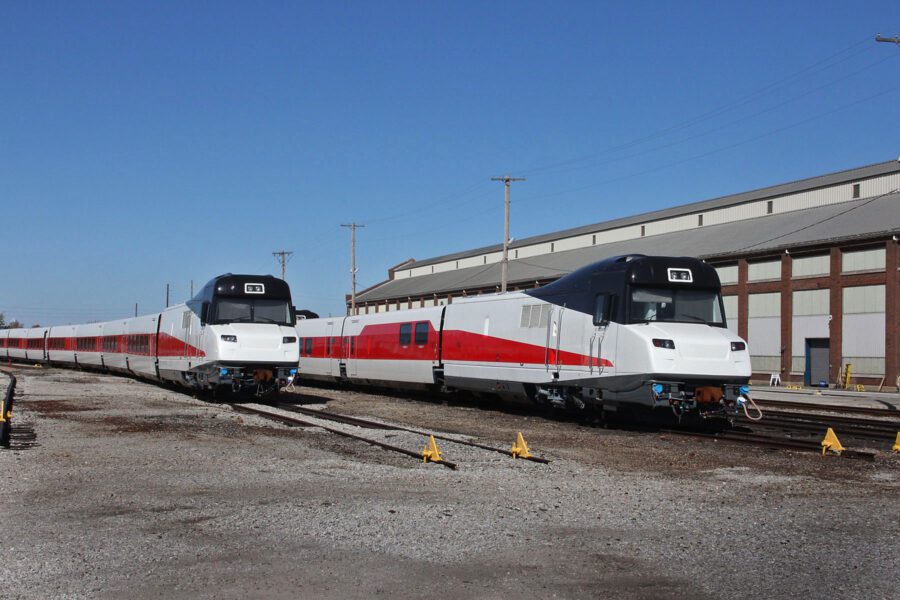
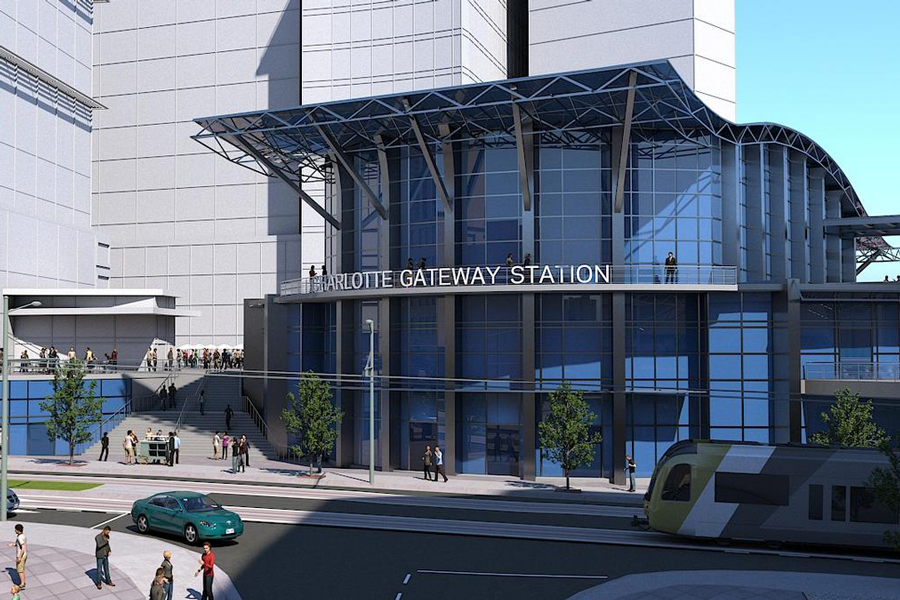
Atlanta Is a Case Study in Transportation Dysfunction. Will Charlotte Follow Its Lead-Or Do Better?
Atlanta ranks 48th (of 50) in a survey of the best cities for commuters. It has six of the nation’s top 20 traffic bottlenecks. Workers spend about $10,000 annually on commuting—which is about 22 percent of the average personal income. Meanwhile, just 2.4 percent of workers use transit for their commute.
What’s the takeaway?
Top politicians in North Carolina look toward Atlanta and draw a curious conclusion. It’s not that the city’s transportation system is out of whack and over-invested in a dysfunctional system. What Atlanta needs, they think, are more cars on the road, more lanes, and more highways. Because more of the same-old same-old will supposedly get better results.
Which is the definition of insanity.
What North Carolina’s leaders think about Atlanta matters because Charlotte is now among the fastest growing cities in the US. It needs to invest heavily in transportation infrastructure to keep up with the rapid growth over the coming years. And its location makes it pivotal to any plans for a network of fast, frequent trains serving the Southeast region and, eventually, the entire eastern seaboard.
Continue Reading
Metra Regional Rail Progress
Metra, Chicago’s commuter railroad, is making progress towards implementing regional rail service under the leadership of its CEO Jim Derwinski. Recent progress includes a simplified fare structure, new trainsets, and increasing speeds along the Metra Electric, which connects Downtown Chicago with southern suburbs. The eventual goal is a modernized Metra with trains running every 15 to 30 minutes, serving people taking all kinds of trips, at all times of day, to destinations across the metro area.
Regional rail would be game-changing for the region, but it goes much further than that. Chicago is the nation’s rail hub, with Chicago Union Station offering direct service to 375 cities and towns in 36 states, and Metra is foundational to the network. Improvements to Metra lines would help set the stage for building high-speed rail connecting Chicago to the Midwest and beyond.
Three Recent Metra Improvements:
1. Simplified Fare Structure – The changes in Metra’s fare system took effect on February 1, with the goal of making a system that is easy for customers to understand, encourages ridership, and simplifies onboard fare collection.
2. Metra Electric Increasing Speeds – Work is underway to increase speeds to 79 mph, and they are exploring options to run up to 90 mph in certain sections. By reducing travel times, they will also be able to increase frequencies. The Metra Electric mainline is one of the best railroad assets in the region, as it’s fully elevated and grade-crossing separated, making it a great candidate for future high-speed trains to use.
3. Battery-Electric Trainsets – Last month Metra announced a deal with Stadler US to purchase eight battery-electric trainsets, with the option to purchase an additional eight trainsets. Metra plans to introduce this equipment on the Rock Island District’s Beverly Branch.
Read More:
Metra Project Underway to Increase Speeds on Electric District
Guest Blogger Jim Derwinski, Metra CEO, Shares New Vision for Regional Rail
Metra Orders Battery-Powered Trains, Gets Funding for New Bilevel Passenger Cars
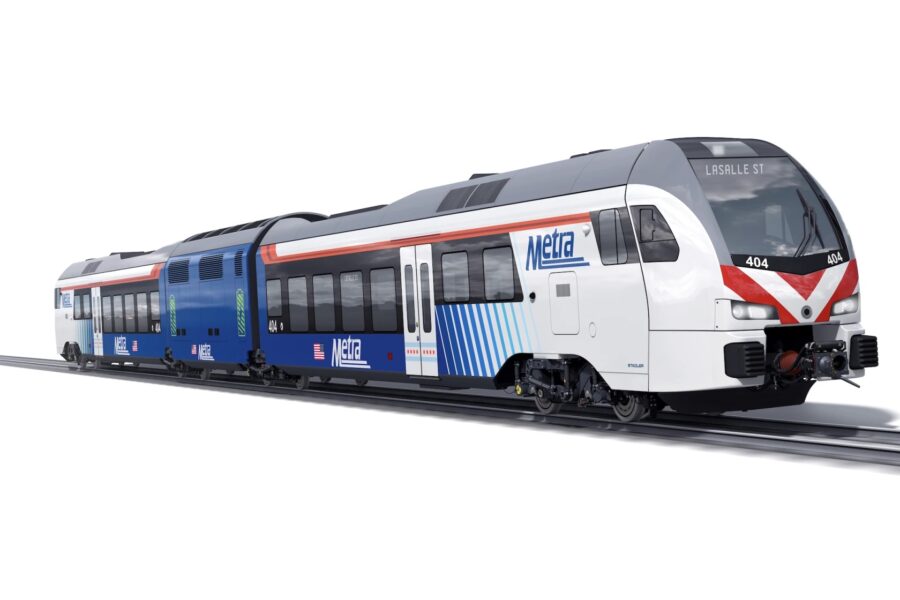

HSRA Staff Update
While in Milwaukee and Green Bay for meetings about expanding train service, Alliance executive director Rick Harnish and deputy director Chris Ott attended a public launch for the capital campaign of the National Railroad Museum in Green Bay. Hosted by the Green Bay Packers at Lambeau Field, the event kicked off the public phase of a capital campaign to expand the Museum’s facilities and protect its collection. Thanks to a grant from the state and support from large donors, the Museum has already raised $13 million of a $15 million goal.
Alliance deputy director Chris Ott also met recently with members of the Wisconsin High Speed Transportation (WiHST) group at UW-Madison. He shared an overview of the High Speed Rail Alliance’s top objectives: a federal railway program, getting at least one high-speed line operating in the United States this decade, and revitalizing the Chicago rail hub. The group discussed obstacles and opportunities for modern trains, and how high-speed rail integrates into the overall transportation and transit network.
Alliance executive director Rick Harnish also went to Springfield, Illinois late last month to meet with elected officials. We are working on getting the state of Illinois to create an integrated rail plan along with state funding to move rail projects forward. You can read more about this plan here.

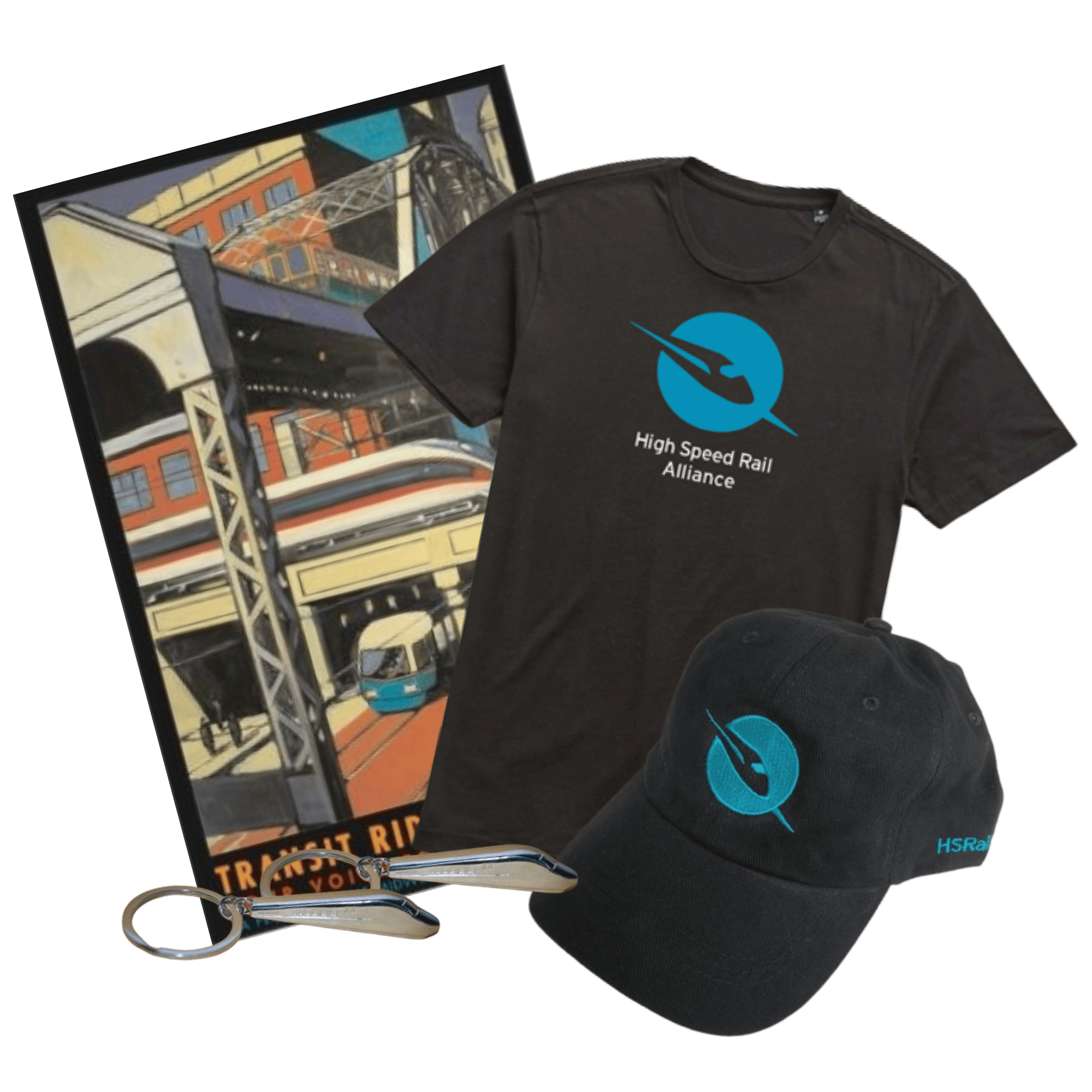
Get HSR Merch
When you join the High Speed Rail Alliance, you support elected officials and other local leaders working for fast, frequent, and affordable trains connecting communities all over North America. Every donation gives advocates for better train service a stronger voice. And, you can get some cool merch to help share the news with your friends.

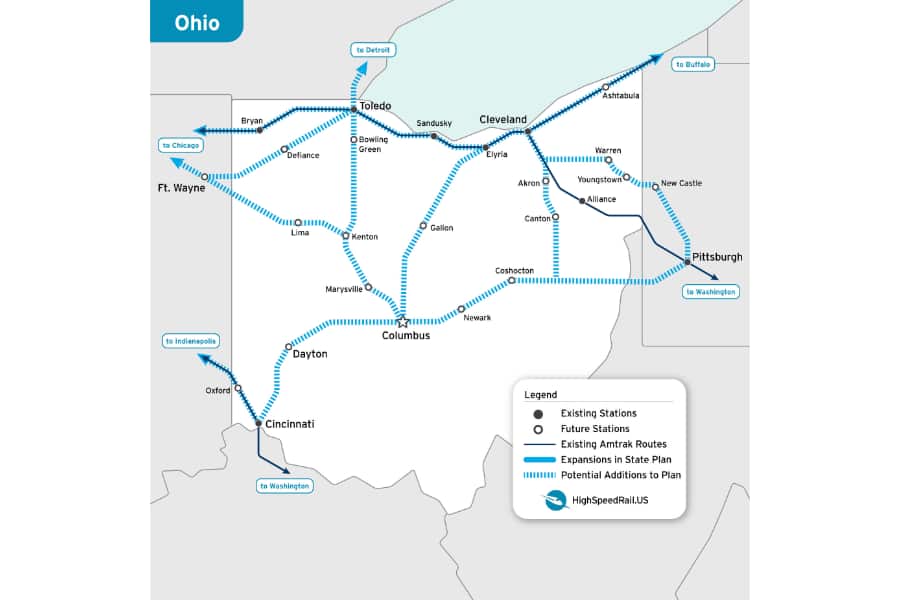
Ohio's Progress Toward New Train Service
When: Friday, March 22 at 12pm CT
In this presentation, you can learn about Ohio’s progress in the FRA’s Corridor ID program—a crucial step in securing funding for passenger-rail service—as well as results from All Aboard Ohio’s Economic Impact Study for the 3C&D (Cleveland, Columbus, Cincinnati, and Dayton) corridor.
We’ll hear about these efforts from Erin Rosiello, who served until recently as the chairperson of All Aboard Ohio. Erin will discuss the next steps in the FRA process and future advocacy efforts to bring passenger rail service to Ohio.
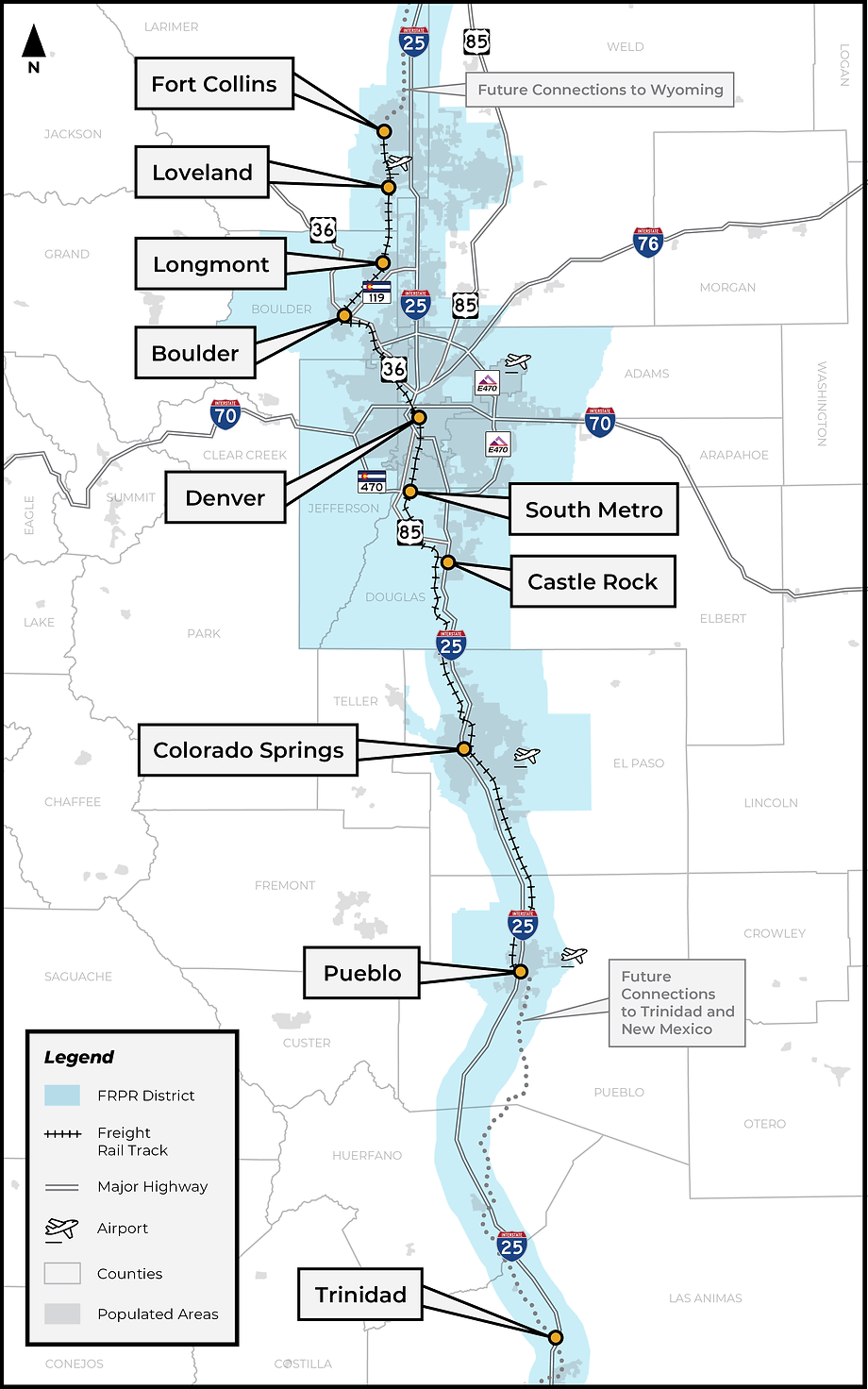
Colorado Front Range Passenger Rail
When: Friday, April 5 at 12pm CT
Front Range Passenger Rail is a developing transportation opportunity for Colorado’s Front Range with anticipated higher speed, intercity travel across Colorado’s Front Range from Fort Collins to Loveland, Longmont, Boulder, Denver, South Denver, Castle Rock, Colorado Springs, and Pueblo.

New High Speed Train From Vegas to SoCal Will Be a Model for the Nation—if It Succeeds (LA Times)
Brightline’s executives say they’ve traveled to Britain, France, Spain and Japan to absorb all the right lessons, choosing routes that can be built with fewer legal fights over land and environmental impacts.
Rail Travel Is Almost Nine Times Greener Than by Car on the Top 100 Business Routes
This is the first time that detailed rail data from across the industry – including engine type, fuel type, journey distance, occupancy and carriage layout – has been combined to showcase the environmental benefits of rail travel for the top 100 business routes across Britain.
Could Wisconsin Get More Passenger Train Stations?
Federally funded studies are examining passenger rail routes connecting Milwaukee to most other leading Wisconsin cities. It’s not just Milwaukee, Madison and Green Bay. One day, you might be able to ride from Pewaukee to Eau Claire, from West Bend to Appleton, or from Walker’s Point to Oak Creek.
Spain-Morocco Massive Underwater Tunnel Project Resurfaces
Hopes for high-speed rail underwater tunnels between Spain and Morocco have been renewed as the Spanish foreign minister visited the North African country this week to discuss the infrastructure project and how it can be moved forward.
SPUR Talk: High-Speed Rail Update
Diridon Station, Salesforce Transit Center, the Portal tunnel, Caltrain electrification—SPUR hosts a panel about all the connections and projects that will together make up the Bay Area’s future rail system.
Lawmakers May Dash Dreams of High-Speed Transit
Maryland lawmakers this session are debating their possible role in funding a high-speed rail project from Washington, D.C. to New York City, with some convinced the answer is clear: the state shouldn’t have any role at all.
The Latest from HSRA
Our Latest Blog Posts
Check out the latest news, updates, and high speed rail insights from our blog!

